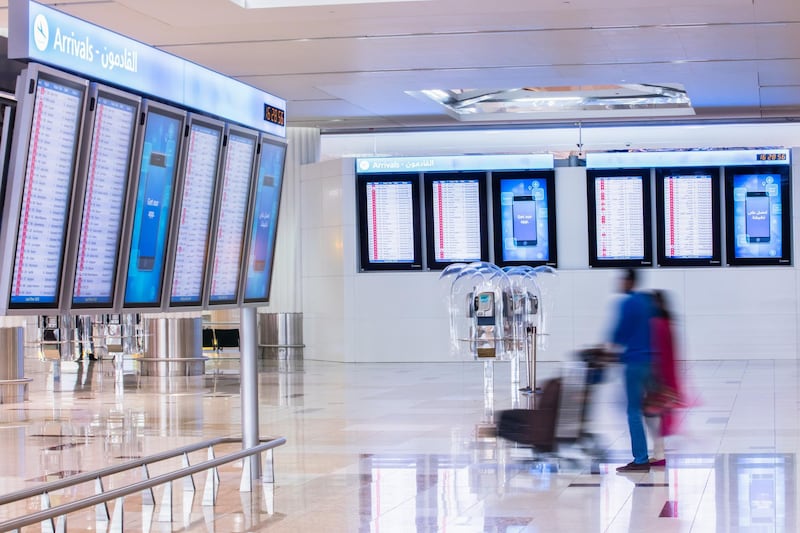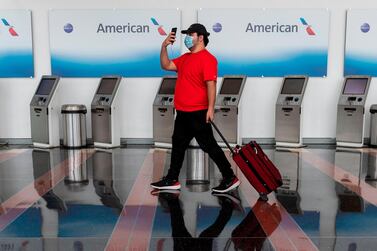Middle East air passenger traffic is expected to fall by about 56 per cent, or by more than 113 million passenger journeys, and demand is not expected to return to pre-coronavirus levels until 2024, the International Air Transport Association said in its revised five-year forecast.
Passenger demand, which is measured in revenue passenger kilometres – an industry metric that shows the distance travelled by paying passengers – is down by about 60 per cent, Muhammad Albakri, Iata’s regional vice president for Africa and the Middle East, told a virtual conference yesterday.
Globally, the number of flights fell by 50 per cent in late July, compared to the early January period. The number of flights dipped by 80 per cent in April – the lowest point so far.
In the Middle East, flights are currently down about 70 per cent, compared to the beginning of the year, Iata said.
“We [Middle Eastern airlines] are still struggling and recovery is quite slow in our region, compared to the global average,” Mr Albakri said.
Profit margins for aviation operators globally, including airlines in the region that have depended on premium travellers to fill first- and business-class seats, have come under severe stress.
Governments around the world are easing travel restrictions gradually as they reopen their economies. However, demand for travel has not picked up as fast as industry experts anticipated.
Operators in the Middle East are expected to suffer a cumulative loss of $4.8 billion (Dh17.61bn) this year. Asia Pacific will be the hardest hit worldwide, with airlines projected to lose $29bn, according to Iata.
Mr Albakri said this was among the reasons why “we continue as an association to advocate and to plead the case of airlines worldwide and, specifically in the Middle East, to governments to come forward and put on the table financial aid, tools and packages to help airlines”.
“They [airlines] have depleted all their cash reserves, and [rescue measures are needed] to protect them from going completely under [and] to protect all the associated jobs.”
Over the period through to 2025, Iata expects passenger numbers in the Middle East to grow by 1.6 per cent each year on average, which is slower than the growth figures before the pandemic and below the global average of 2.8 per cent.
The cumulative growth over the five-year period will result in 21 million additional journeys in 2025, compared to 2019 figures, it said.
However, the near-term outlook remains highly uncertain and the risks are “firmly on the downside over the next five years”, Mr Albakri said.
Iata also called on regional governments to harmonise biosafety measures for passengers across the region as aviation operations restart.
However, inconsistent testing procedures and border constraints in some countries have deterred passengers and hampered a quicker resumption of air travel in the wider region.
Twenty-eight countries in the Middle East still have quarantine measures in place while 80 per cent of passengers avoid travel to countries where such restrictions are in place, Iata said.
“Imposing quarantine measures on arriving passengers keeps countries in isolation and the travel and tourism sector in lockdown,” said Mr Albakri.
“We are proposing a framework with layers of protection to keep sick people from travelling and to mitigate the risk of transmission should a traveller discover they were infected after arrival.”








